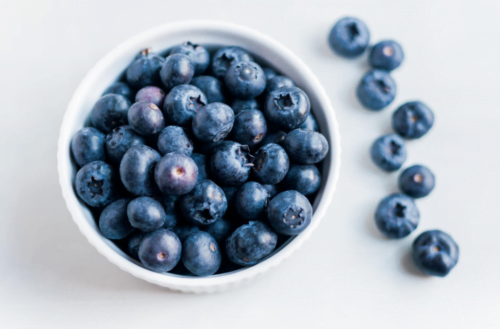Veganism is the art of pursuing a diet and lifestyle free from any animal products like milk, fish, and meat. People who follow this ideology are called vegans. Many vegans are faced with nutritional debates and accusations from strangers for their beliefs. Nonetheless, they stand firm by their animal-protection ethics. The vegan lifestyle is full of compassion and kindness, and more people are liking the idea.
More parents are teaching their children about the many benefits of the vegan lifestyle. This includes explaining the essentials of the lifestyle, fun and hearty recipes, and the different ways to become an activist for the cause. Children can benefit from the lifestyle as they grow up to become healthy adults by practicing the basics. Their risks for heart disease and cancer diminish, and they can steer away from obesity by opting for dairy alternatives, herbs for flavoring, and vegan food that’s high in antioxidants.
If you’re looking to help your children transition into veganism, here is an essential guide just for you.
Vegan Pantry

One of the first things we think of when the topic arises is food. The vegan pantry plays an important role when trying to transition into a cruelty-free diet. The pantry and fridge determine what we eat, so it’s necessary to clean and restock it for your child’s new lifestyle. This includes stocking your fridge and freezer with plenty of vegan essentials such as almond milk or soy milk as dairy alternatives, fruits like berries for delicious smoothies, and veggies for snacks.
Additionally, you may want to have vegan recipes at hand for meal plans and desserts, for example. There are plenty of ideas out there to try out with your kid. For breakfast, you can try preparing oatmeal or a tofu scramble with green veggies, seaweed, and soy sauce. Perhaps you and your kid can enjoy toasts with avocado or vegan jellies. For lunch, you can indulge in vegan mac and cheese or tofu hotdogs with vegan mustard. Moreover, you can prepare vegan soups, brown rice, quinoa, and other whole foods.
You can take advantage of mock-meats (vegan meats) to help your picky eater—they already come prepared with delicious seasonings they’ll love. If necessary, you’ll have to visit your local grocery store to buy ingredients that can replace your current ones. You can buy anything from fresh fruits, lentils, and whole-grain ingredients to spices, herbs, and peanuts. Furthermore, you can add cruelty-free sweets, sweeteners, and ice cream to your cart for baking desserts and rewards.
Nutrition

When it comes to your child’s health, you may think you know best. However, on a more humbling note, it’s essential you visit your preferred pediatrician to ensure a deeper analysis of your child’s health. This includes conducting blood tests to determine if your child has any health deficiencies or if their diet needs any modifications to cover more nutrients. Blood tests will help detect if your child is low on electrolytes like sodium and calcium and spot any irregular thyroid activities. They can also help detect low or high glucose levels and help prevent diabetes.
Your healthcare provider will translate any complicated science terms in the results for you and choose a course of action for your child’s vegan diet and lifestyle. They may suggest lowering their sweets intake and recommend taking health supplements to increase their vitamin, magnesium, zinc, or iron levels. If they deem it necessary, they will refer you to a certified nutrition specialist who will focus on developing a vegan diet for your child.
A nutritionist may suggest your child consumes more lentils, mushrooms, whole-grain bread, and oats to increase their protein intake. For Omega-3 fatty acids, they may advise a more plant-based diet around flaxseeds, oatmeal, and walnuts. Moreover, for iron intake, they could recommend eating more lentils, nutritional yeast, sesame seeds, and quinoa. For vitamins like B6, they may opt for sweet potatoes, bananas, and lemons. If all else fails, your nutritionist may propose taking more supplements, but in moderation.
Entertainment

When it comes to learning, children are easily attracted to forms of entertainment like games and music. While you read a book about veganism to learn about healthy ways to live the lifestyle, you can help your child learn more through more entertaining means like movies. There are tons of educational movies and docuseries that can help your child learn more about the topic. Additionally, you can introduce them to vegan role models like singers, actors, and activists. Allow them to openly explore their learning options in addition to introducing them to alternatives you consider appropriate for them.
Recycle

Another staple theme to consider when helping your child go vegan is recycling. Recycling is the means of conserving the environment by reusing materials. Children can easily be taught about recycling through challenges. From an early age, familiarize them with different forms of zero-waste recycling systems like setting up a recycling bin next to the trashcan in your kitchen. They can also take part in challenges like saving water when they brush their teeth, reusing bags for snacks, and reducing waste by refilling their reusable water bottles. You can help your child understand recyclables like toilet paper (no, they won’t reuse the paper) and zero-waste packaging by implementing green routines on a daily basis. A quick Google search of “zero-waste challenges for kids” will return a plethora of results that you can implement at home or even suggest at school.
Birthday Parties

When it comes to children (and many of us adults), birthday parties can be some of the most memorable and fun days of the year. It’s a day to dedicate to fun activities, cake, and friends. If you were wondering, yes, it’s definitely possible to have a vegan birthday party. You can use organic ingredients like bananas, nutritional yeast, cashews, and maple syrup to bake a cake that all kids will love. On top of that, you can consider giving them vegan presents and setting up zero-waste decorations for a more environmentally friendly gathering. For the adults attending the party, you can cook vegan curries and quinoa or prepare mock charcuterie boards with vegan cheeses, chickpea hummus, almonds, mango bits, and veggie sandwiches. You can prepare applesauce, salad bowls, and smoothies as refreshing snacks for all ages.
Sustainable Clothes

Like most of us, children also express themselves through their clothes. However, when it comes to ethical fashion, the cruelty factor must be eliminated from the equation. Nowadays, we can purchase (or make) sustainable clothes made out of organic cotton and low-impact dyes. Using zero-waste dresses and accessories is a great way to instill cruelty-free values in your child. Additionally, you can opt for vegan fabrics for your beddings and home accessories like curtains. By avoiding garments and fabrics that include silk, fur, and angora, you are teaching your child the positive impacts their ethical fashion has on the rest of the ecosystem.
Travel

When it comes to travel, there is a long list of countries with plant-based diets and cultures. For example, Peru, Israel, and Taiwan stay true to their vegan cultures by using a lot of quinoa, onions, and sauces in their dishes. Other countries like Japan also offer travelers all kinds of dishes, including plant-based curries, tofu, and sushi for your and your child’s vegan diet. If you’re planning on traveling with your child, opt-in for carbon footprint-reducing alternatives like biking and backpacking. They will develop a healthy lifestyle, reduce their risks of developing physical disabilities, and extend their longevity. Be sure to pack snacks for the trip so they’re always energized and ready for adventures.
Activism

Introducing your child to different kinds of vegan activism can help your child understand that they’re not alone in this process. They will see how others are following the same vegan lifestyle for everyone’s health benefits and create connections that can last a lifetime. These activities can include large marches to reduce the carbon footprint from large factories. Additionally, your child can be taught about the cruelty behind zoos and circuses by boycotting these establishments. Be sure to pack a hearty snack like granola bars or tomato chips in zero-waste packaging like reusable bags. Furthermore, your child can learn about pet-care products that line up with the vegan lifestyle and teach others about it through casual talks at the dog park.
Mobile Apps

With so much technology, we are able to read books and recipes on the go. Take advantage of these innovations to equip your child with the necessary tools to live a healthy life while conserving the planet. Mobile apps can help them grow their interest in the vegan lifestyle and be exposed to more efficient ways to live the ideology. Some mobile apps can help them choose the best alternatives for meat foods to help during their transition. Additionally, they can help you restock your vegan pantry by looking up grocery stores or making a list of zero-waste kitchen products you need to purchase.
Helping your child lead a vegan lifestyle can be one of the most rewarding things you can achieve in your life. Help them explore their options in a comfortable environment and introduce them to better alternatives that make the world a better place.











